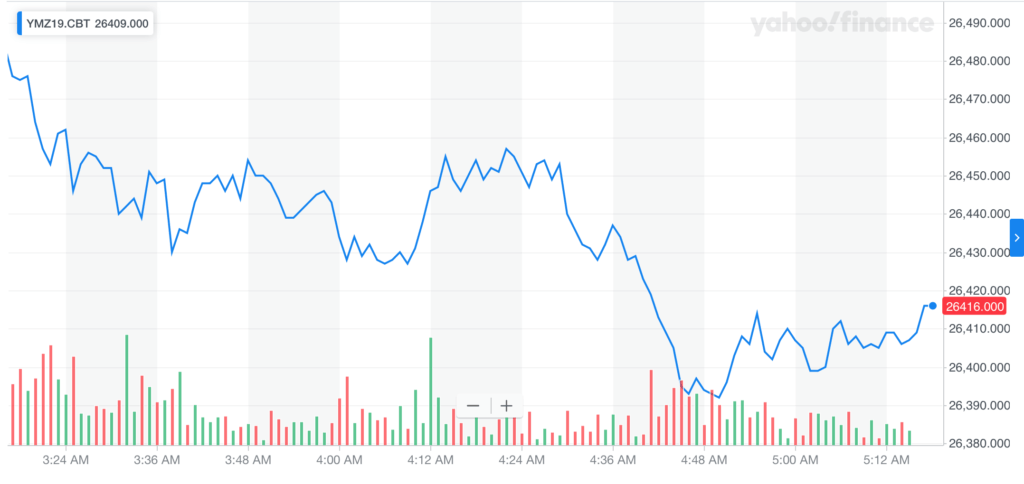Dow Futures Plunge as 2008-Crisis Parallels Loom Large

The Dow is taking a sharp downward turn as a number of indicators point to the 2008 crisis. | Source: Eduardo Munoz Alvarez/Getty Images/AFP
Dow Jones Industrial Average (DJIA) futures suffered another collapse in early trading Wednesday, pointing to a weak stock market open. As US manufacturing data falls to a fresh decade-low, traders are battling with yet another throwback to the 2008 financial crisis.
A handful of warnings are now flashing red. Weak manufacturing, Federal Reserve intervention, housing market weakness, and the inverted yield curve are all nauseating flashbacks to the Great Recession.
It’s beginning to look a lot like 2008…
Dow futures dive 100 points
At 5.27 am ET, Dow Jones Industrial Average (DJIA) futures fell more than 100 points, extending yesterday’s stock market losses.

S&P 500 futures suffered a similar collapse with 0.44% wiped off in early trading. The tech-heavy Nasdaq Composite futures market fell 0.52%.
US manufacturing data at decade lows
As CCN.com reported, the market recoiled in yesterday’s session as US Supply Management’s manufacturing purchasing managers’ index (PMI) came in at 47.8. A reading below 50 signals a contraction, up-ending Wall Street’s expectations of a mild bump.
This isn’t a trend isolated to the US. Manufacturing output is also in contraction in the UK , Germany , and China . Investors who battled through the 2008 downturn will remember that sliding PMI was a reliable warning sign for the Dow’s downturn.
“During the 2008-2009 financial crisis, [manufacturing] data was among the first available and provided an early signal of the fall and then rise of the sector” – Institute for Supply Management .
More eerie 2008 parallels for the Dow
Outside yesterday’s weak manufacturing data, there are more throwbacks to 2008. The housing market is showing signs of weakness, despite lower interest rates. House prices fell month-over-month in August while time on the market increased.
In another concerning housing trend, Wall Street is playing the mortgage-backed securities game again. Citi, JP Morgan, Goldman Sachs, and Wells Fargo are once again selling mortgage-backed bonds, according to the Wall Street Journal .
And if that wasn’t enough, the Federal Reserve was forced to step in to support Wall Street’s overnight lending market in September. For the first time since 2008 , the New York Fed injected $75 billion overnight capital into the repo markets.
Throw in the notorious inverted yield curve (last seen prior to the 2008 collapse) and you’ve got a number of recessionary warning signs weighing on the Dow Jones.